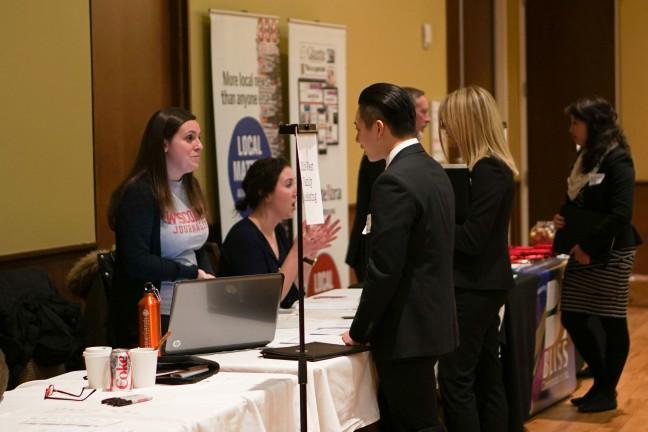Nobody can ever fault student activists on this campus for running out of ideas and opportunities to protest.
Proof of this came last week as several students met to organize against dress codes in place at campus-area bars. According to Kate Losey, a student who attended the protest Friday night, demonstrators focused on Johnny O’s and Brothers and talked to those waiting in line at Madison Avenue.
At Johnny O’s, a sign informs patrons: “Proper attire required after 9 p.m. No athletic wear, cut off shirts, etc.” At the entrance to Madison Avenue, a newly opened establishment also owned by Jon Okonek, a sign reads: “Proper Attire Required. No athletic wear (sweats, warm-ups, jerseys, etc.). No bandanas. No torn or badly worn clothing. Dress T-shirts only.” Brothers has a similar dress code with restrictions on headgear.
Amanda Mueller, a bartender at both Johnny O’s and Madison Avenue, commented on the prohibition of jerseys after 9 p.m. at Johnny O’s.
“During the day, there is absolutely no problem with people coming in wearing athletic wear to watch a game,” she said. “When the restaurant is closed, however, and the bar atmosphere takes over, is when the dress code is enforced.”
Mueller further explained part of the reasoning behind the jersey policy.
“I have seen many fights break out between Badger fans and rival supporters just outside on the streets,” she said. “It seems to me that those tensions could only be heightened after people have been in a bar drinking all night. Just seems like adding fuel to the fire; that’s something that we try to avoid.”
Rather than adjusting their dress or simply patronizing alternative locations, protesters have made a mountain out of a molehill, fallaciously arguing that the dress codes stem from racism.
Jon Okonek himself also spoke to me about his dress code and the incident that sparked the controversy, noting that it has “nothing to do with race.” He called his dress code “very simple” and expressed his interest an owning an establishment in the downtown area where people dress up.
Okonek explained the link between attire and behavior.
“When people get dressed up nicely, people behave accordingly,” he said. “I’ve been in business 20 years, and it does make a difference.”
While this dress code and its purpose are relatively self-explanatory, the incident that sparked the protest deserves context. Okonek noted that the controversy began when an individual with whom he had been having problems for years was asked to leave Johnny O’s. The individual was wearing what Okonek described as a “very low-cut jersey,” but his outfit was almost beside the point.
Okonek explained that this individual “had been getting in so many fights at Club Amazon and had been banned from there by the same ownership, and we did not want him [in Johnny O’s] either.” (Club Amazon was another Okonek property.)
Put simply, the individual involved was already banned due to past behavior.
Okonek estimated that he turns away whites over African-Americans by more than a 50:1 ratio, and three-fourths are because of logo shirts. Mueller confirmed the consistency in the dress code with a personal anecdote:
“I, along with two other Johnny O’s employees, decided to stop by and visit some people at Madison Avenue a few Wednesdays ago. We were wearing Badger T-shirts, and Jon kindly told us that he would appreciate it if we would go home and change, seeing that logo T-shirts of any kind are not allowed.
“So, the dress code is applied across the board — whites, blacks and employees alike. It is a nice place. People continuously comment on how much they appreciate having a dress code, and I, as an employee, appreciate it as well.”
Apparently patrons also appreciated it this past weekend. Protesters boasted of the large overall participation, despite the relatively small number picketing at any given time, and of their effect on business.
Okonek, however, had a different take, noting that he had his busiest Friday and Saturday nights ever at Madison Avenue this past weekend, even calling the incident “great advertising” for the venue he offered.
As usual, the activists participating in this protest showed their ideology to be a mile wide and inch deep — broad, sweeping claims with little or no substance underneath.
And once again, they failed in effecting change.
Mark A. Baumgardner ([email protected]) is a senior majoring in electrical engineering.







